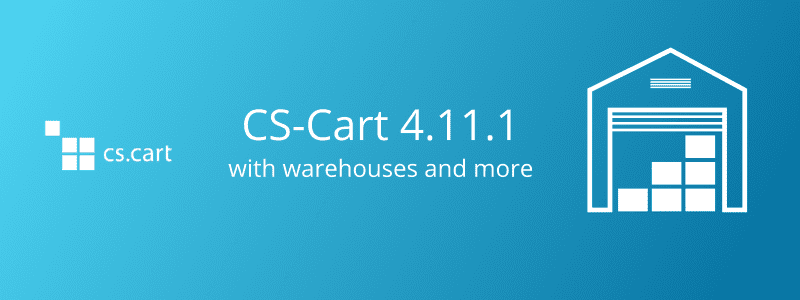Meet CS-Cart 4.11.1 with Warehouses and Other Improvements
Hello!
We have released CS-Cart 4.11.1. Here is the full list of changes; this article will cover the most important of them. There are also changes specific to Multi-Vendor, which we cover in a different article.
Warehouses: Separate Inventory Tracking for Different Locations
Previously, a product had only one field for quantity. But things aren’t as simple in business. There may be multiple physical shops, and not all of them have the product in stock. A supplier might have the product, but it will take some extra time to get it to the store or ship it.
The new Warehouses [Beta] add-on in CS-Cart Ultimate and Multi-Vendor Ultimate informs customers about such things. Here is what the add-on can do:
- Show your customers which of your offline stores have the product. If the product isn’t available, tell customers how soon it can arrive from another store or warehouse after order.
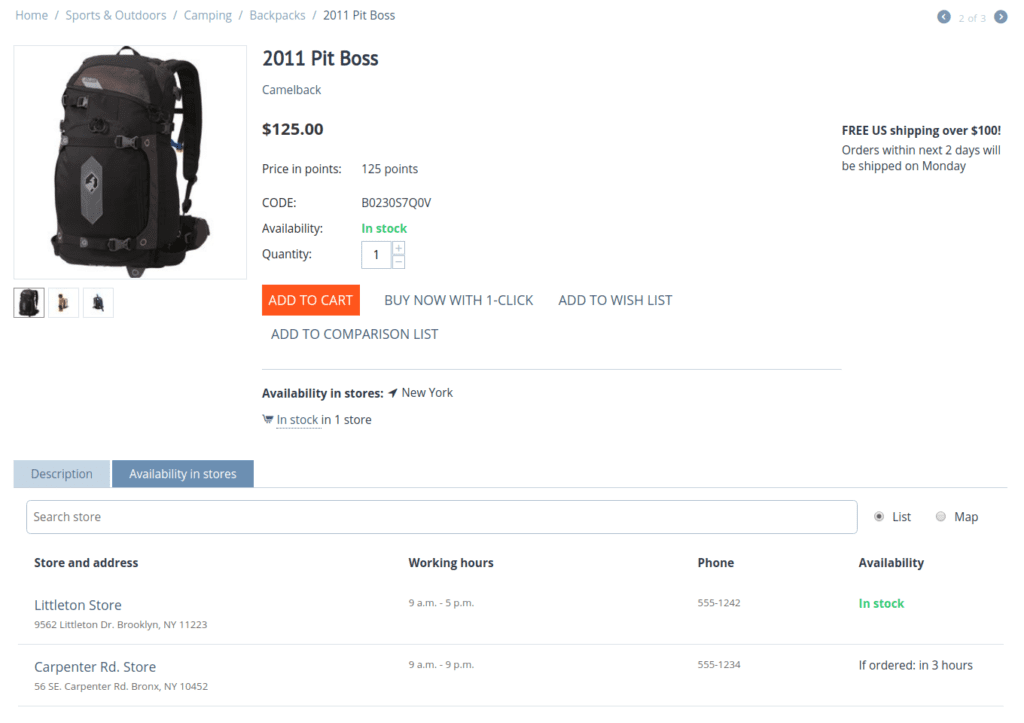
- Warn customers when moving a product from a specific store or warehouse will take especially long. That information appears in the product list, on the product page, and in the cart.
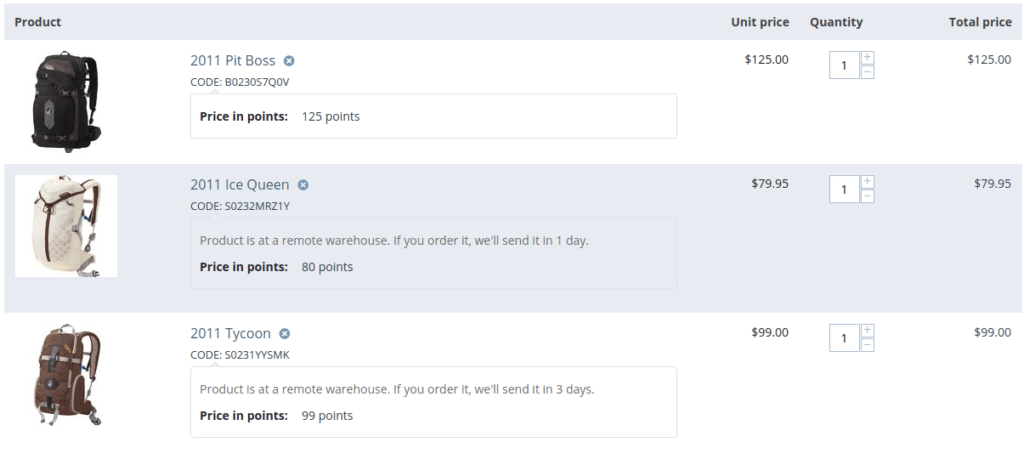
- Ensure that customers don’t order more products than you can ship to them. For example, if you have warehouses in New York and Los Angeles, you probably don’t move products from one coast to the other. You can configure your warehouses so that customers from New York see only the products from New York warehouse as “In stock”. This is achieved by choosing the rate areas to which a store or warehouse can ship products.
- Set a different priority of warehouses, depending on where the customer is from. That way, if your buyer is in New York, products will be taken from New York warehouses first, and from Connecticut warehouses second. You can do it in the rate area settings.
You’ll be able to turn pickup points from the Stores and pickup points add-on (introduced in 4.10.1) into Stores and Warehouses.
- A store is a physical place where customers buy products or pick up their orders.
- A warehouse is a place where you store products, but customers don’t know about it. If you get a product from multiple suppliers (we mean actual suppliers here, not the “Suppliers” add-on in CS-Cart), then a supplier can be considered a warehouse as well.
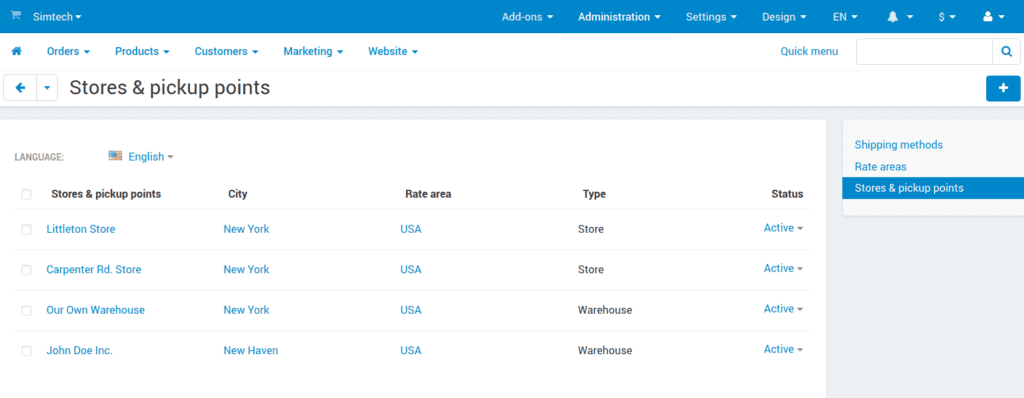
Every product editing page gets the Quantity tab, with a different quantity for each store and warehouse. You can also update quantities at stores and warehouses via export and import.
The documentation has more information about warehouses and how they work.
Improvements for Admins
- All content in CS-Cart is displayed in blocks, and some of them can be reused on multiple pages. To make block management easier, we have created a new page: Design → Layouts → Manage blocks. It shows all the blocks that your store has, where they appear, and how many times they are used. The page also allows you to search for blocks of a particular type, or in a particular place.
This page is especially useful now since you can insert blocks with products into blog articles (see the end of 4.10.3 announcement for more details).
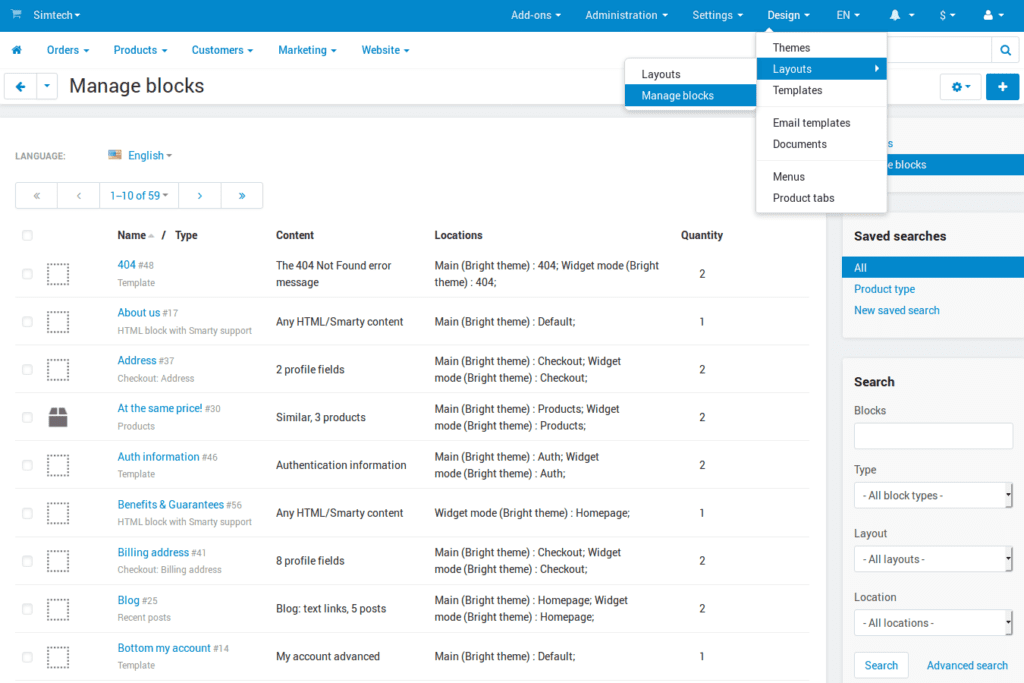
- Previously, the list of add-ons had two tabs. You had to switch to the second tab to install a missing add-on. That wasn’t convenient, and some people might not have known that there were more add-ons in CS-Cart than those installed by default.
That’s why we have reworked the add-on list. Now all add-ons are in one list. It looks like this:
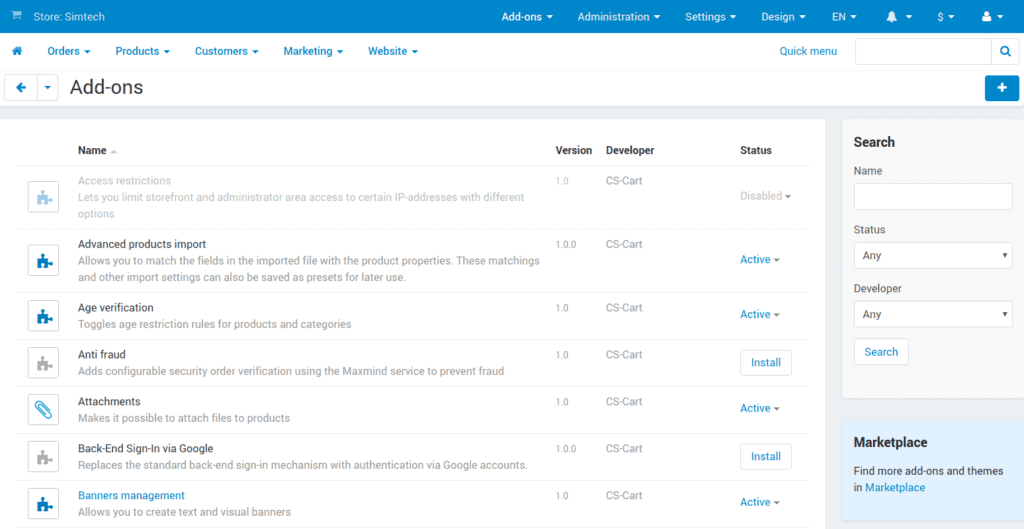
- We keep developing the Notification Center. The goal is to eventually create a single place where you can manage all notifications (emails, pop-up messages, etc.) that CS-Cart and Multi-Vendor show or send to admins, customers, and vendors.
That’s why we’ve moved the management of email templates and documents to Administration → Notifications.
- Previously, it was hard to export products from CS-Cart if you needed to export only a part of them. Even if the search found you all these products, you had to select them all. The search results didn’t show all the products at once, so you had to increase the number of displayed products. Even that didn’t help when you needed to export about 1,000 products—the page took too long to load.
That’s why we’ve added Export found products to the gear button. It will export all search results to a CSV file.
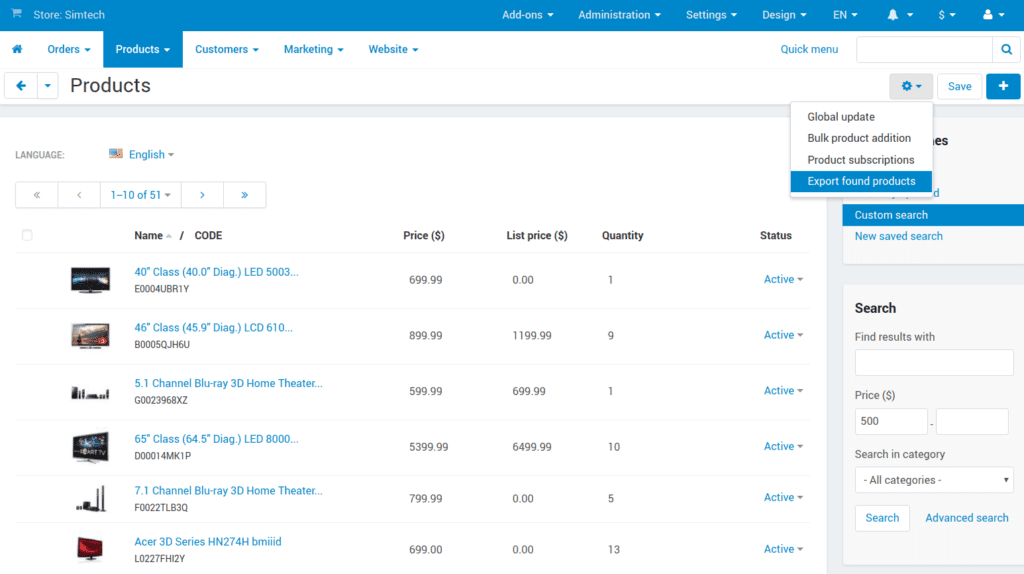
- Previously, if you wanted to use Facebook Analytics, you needed a third-party add-on. But now there is the Facebook Pixel add-on that comes with CS-Cart by default. It is a tool for tracking customer activity on your site and improving the efficiency of your Facebook and Instagram advertising.
Currently, the default pixel integration can track page views, adding products to cart, and placing orders.
Improvements for Customers
- Previously, if a customer hadn’t signed in and tried to check out with an email that already existed in the database, an error message appeared. It didn’t help to place an order in any way

Now the customer will be offered to sign in instead. There’ll be no need to remember the password: if the customer presses a button, one-time code for signing in will be sent to his or her email address.
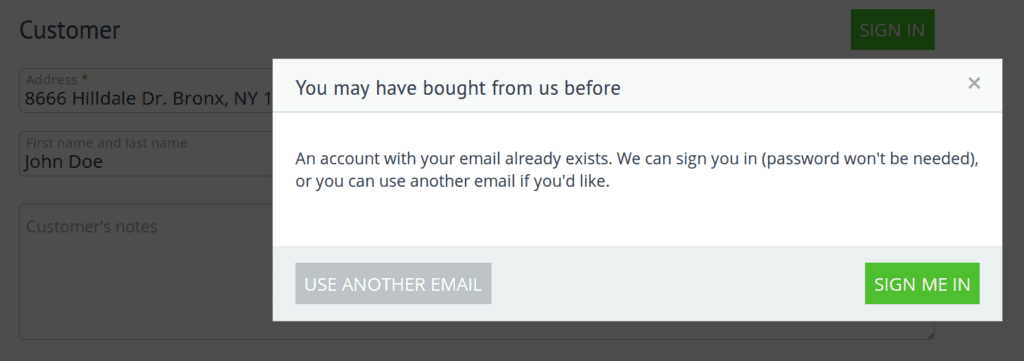
- An add-on called Ask Seller a Question has been introduced. It allows customers to ask a question from the page of any product.
Administrators answer the questions in the Customers → Message center menu. Customers get notified about a reply via email and can view it under My Account → Messages.
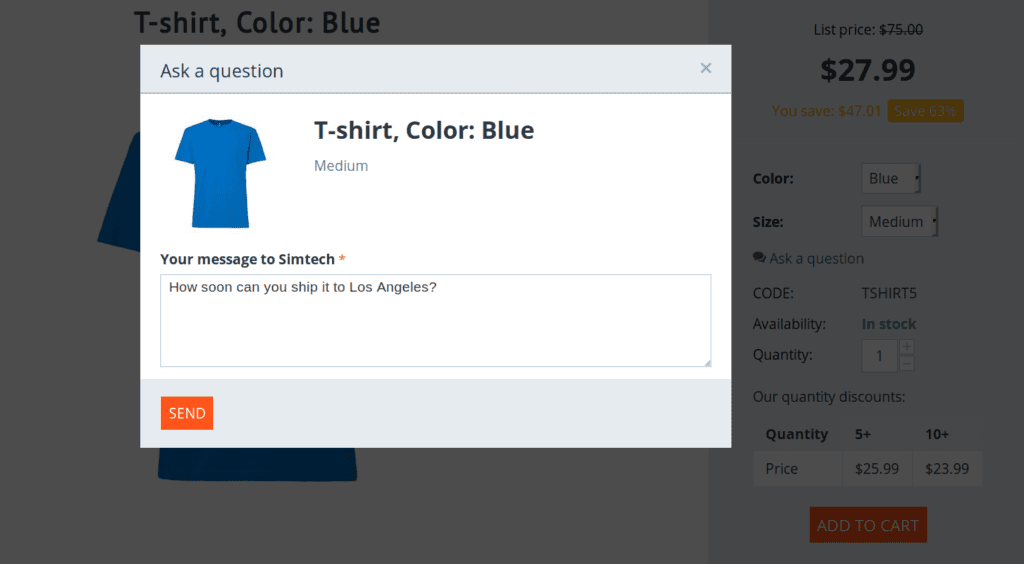
Check out what changed in Multi-Vendor or see the list of all changes, big and small.
The upgrades to version 4.11.1 are already available. As usual, for the first few days after the release we hand out upgrade packages in limited numbers, but then we lift that restriction. So if you don’t see this upgrade in your Upgrade Center yet, please try again later.
Yan Anderson is the Head of Content Marketing at CS-Cart with over 10 years of experience in the eCommerce industry. He's passionate about explaining complicated things in simple terms. Yan has expertise in building, running and growing eCommerce marketplaces. He loves to educate people about best practices, new technologies, and trends in the global eCommerce industry.
